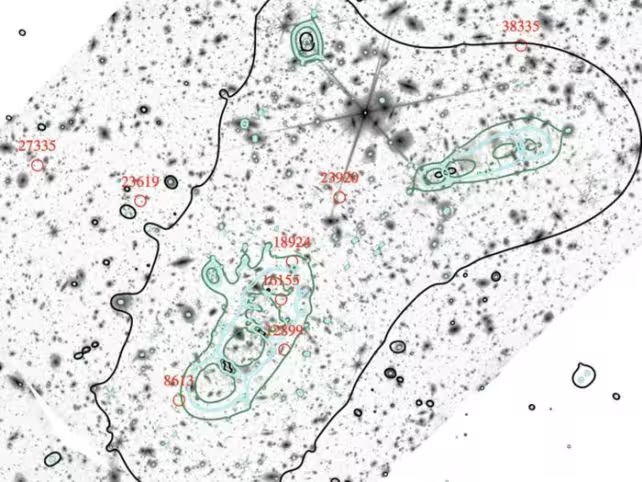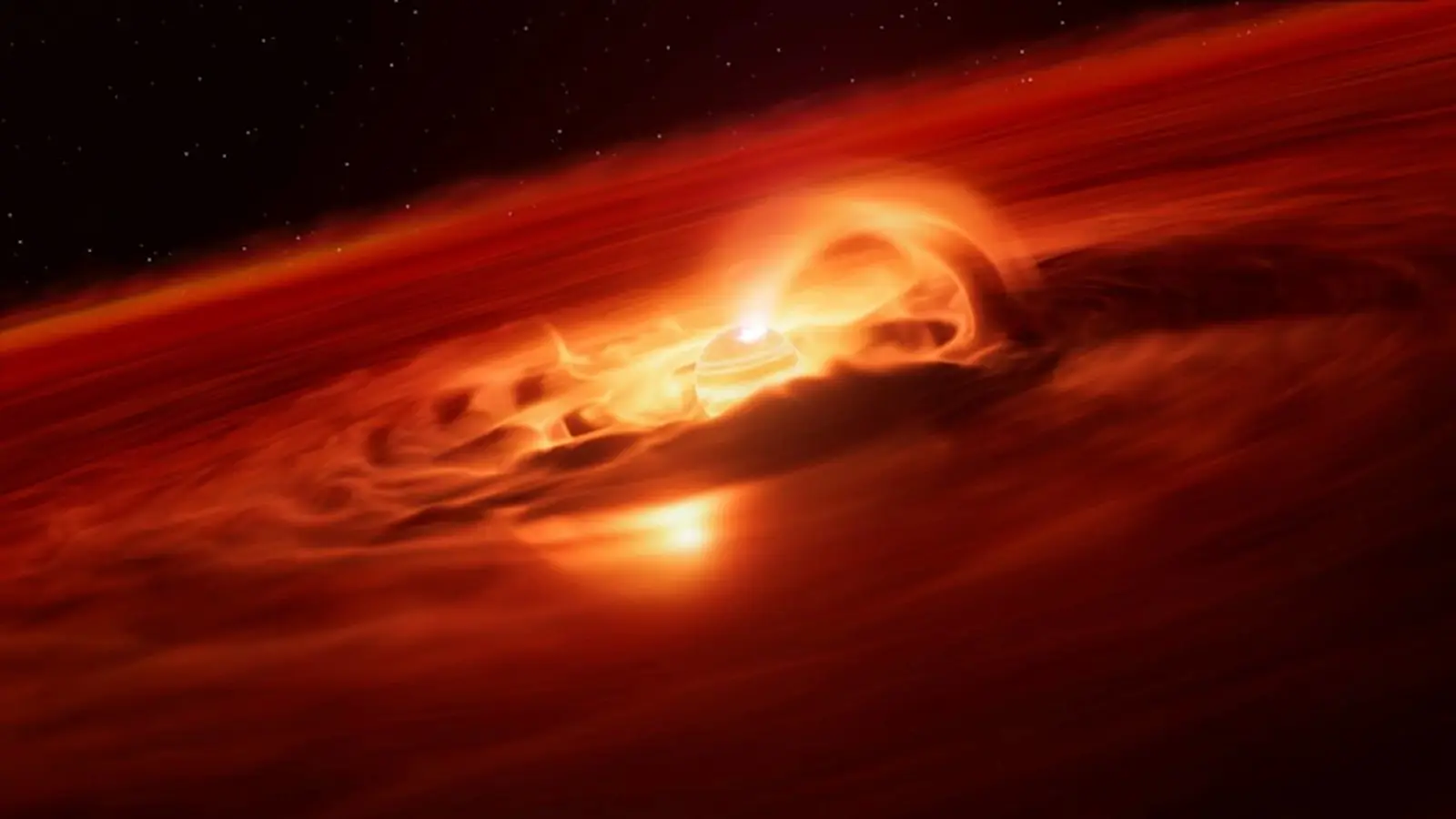7 Minutes
How the cosmic lights came on
Astronomers are closing in on the long-standing mystery of what illuminated the early Universe during the epoch known as the cosmic dawn. New analyses combining deep observations from the James Webb Space Telescope (JWST) with archival Hubble data point to a surprising source: a vast population of faint dwarf galaxies that collectively produced the ionizing photons needed to clear neutral hydrogen from intergalactic space and complete cosmic reionization.
This result, reported by an international team led by Hakim Atek and published in 2024, argues that the cumulative ultraviolet output from low-mass galaxies—far more numerous and brighter in aggregate than previously assumed—was sufficient to transform the mostly neutral hydrogen fog of the early Universe into an ionized plasma that allows starlight to travel largely unimpeded.
Scientific context: recombination, the dark ages and reionization
At minutes after the Big Bang the Universe was a hot ionized plasma. Within roughly 300,000 years it cooled enough for protons and electrons to recombine into neutral hydrogen and helium, an epoch known as recombination. The Universe then entered the cosmic "dark ages": neutral gas filled intergalactic space and free electrons were scarce, so early photons scattered and could not travel far.
As the first stars and galaxies formed from these primordial gases, their high-energy ultraviolet (UV) photons began to ionize hydrogen, stripping electrons from atoms and gradually clearing the fog. This epoch of cosmic reionization concluded by about one billion years after the Big Bang, when most intergalactic hydrogen had become ionized and the Universe became transparent at many wavelengths. Identifying the dominant sources of the ionizing radiation—massive galaxies, quasars around supermassive black holes, or instead numerous low-mass systems—has been a central question for observational cosmology.
Observations and methods: lensing, JWST spectra and Hubble imaging
Atek and collaborators used JWST deep-field spectroscopy of galaxies seen through the gravitational lensing cluster Abell 2744, supplemented with high-resolution imaging from the Hubble Space Telescope. The field of view for Abell 2744. An estimated 50,000 sources of near-infrared light are represented in this image. (NASA, ESA, CSA, I. Labbe/Swinburne University of Technology, R. Bezanson/University of Pittsburgh, A. Pagan/STScI)
Abell 2744 acts as a natural magnifying glass: its large mass warps space-time and amplifies the light of extremely distant background galaxies. Lensing allowed the team to detect and characterize ultra-faint galaxies that otherwise would lie below detection thresholds. JWST provided the spectroscopic sensitivity needed to measure features associated with ionizing photon production, including UV continuum slopes and emission lines diagnostic of young, massive stars and low-metallicity stellar populations.
Detailed spectral analysis revealed two crucial points: first, dwarf galaxies at redshifts corresponding to the cosmic dawn are vastly more numerous than their larger counterparts—by roughly 100 to 1 in the sampled field—and second, their combined ionizing output exceeds previous estimates. The researchers find that the collective ionizing radiation from these low-mass galaxies is about four times higher than what would be expected if large galaxies dominated reionization alone.
Key findings and implications
- Abundance: Ultra-faint dwarf galaxies appear to dominate the galaxy number counts in the early Universe. Their sheer numbers compensate for their individual faintness.
- Ionizing efficiency: These dwarfs are efficient producers of ionizing photons. Factors contributing to this efficiency include young, hot stellar populations, low metallicity (fewer elements heavier than helium), and relatively porous interstellar media that allow ionizing photons to escape into intergalactic space.
- Reionization driver: When summed across the population, the dwarfs' ionizing flux is sufficient to account for a major fraction—if not the majority—of the photons required to complete cosmic reionization by z ~ 6 (about one billion years after the Big Bang).
These conclusions shift the focus from rare, luminous sources—like quasars and massive starburst galaxies—to more numerous, low-mass systems as the primary architects of the Universe's transition from neutral to ionized.
Limitations and future work
Although the Abell 2744 lensing field offers an unprecedented view of faint early galaxies, the study covers a relatively small patch of sky. The team emphasizes the need to survey multiple lensing clusters and blank fields to confirm that this region is representative rather than anomalous. Additional JWST programs, combined with Hubble legacy data and forthcoming ground-based observations, will expand sample sizes and improve constraints on key parameters such as the galaxies' escape fraction of ionizing photons and their intrinsic UV luminosity function.

A JWST deep field image with some of the sources the researchers identified as drivers of reionization. (Hakim Atek/Sorbonne University/JWST)
Better modeling of stellar populations, radiative transfer through interstellar gas, and population synthesis at low metallicity will also be required to refine estimates of ionizing photon production.
Expert Insight
"This is a paradigm-shifting result that underscores how a large population of modest galaxies can have outsized effects on cosmic evolution," said Dr. Lila Moreno, an observational cosmologist not involved in the study. "JWST's sensitivity combined with gravitational lensing lets us census faint systems that were invisible before. Confirming these results across more fields will be the next critical step, but the implication is clear: low-mass galaxies were likely the engines that powered reionization."
"If these findings hold up, they influence models of early galaxy formation, the timeline of reionization, and how we interpret the growth of structure in the first billion years," she added.
Future prospects and related technology
Upcoming JWST observation cycles plan many more deep-field pointings and lensing-cluster surveys aimed at the z > 6 Universe. Complementary facilities—such as the Extremely Large Telescope (ELT), next-generation radio arrays searching for the 21-cm signal of neutral hydrogen, and advanced UV-capable space telescopes—will help map the reionization topology and test whether dwarf galaxies dominate on cosmic scales.
Understanding escape fractions, stellar initial mass functions in metal-poor environments, and feedback processes in low-mass halos will be key to building a coherent theoretical framework. If dwarf galaxies did indeed switch the lights on, they also provide an accessible laboratory for studying early star formation and the build-up of the first heavy elements.
Conclusion
JWST has opened a new window on the cosmic dawn. Current evidence from a lensed field in Abell 2744 indicates that ultra-faint dwarf galaxies, despite their small size, could collectively supply the ionizing photons needed for cosmic reionization. These findings reframe our understanding of the early Universe and set a clear agenda: expand surveys, refine spectral diagnostics, and test whether these small galaxies were the Universe's principal lighting crew.
Source: sciencealert


Leave a Comment